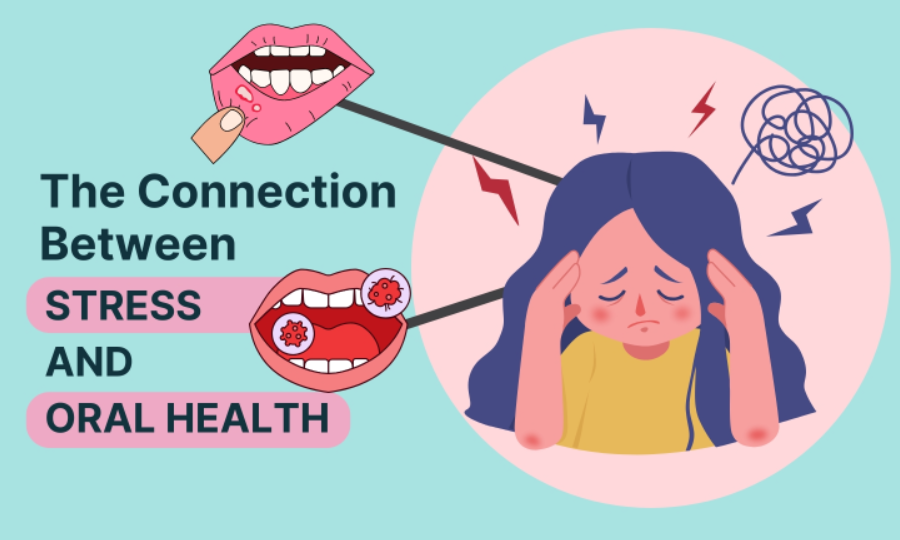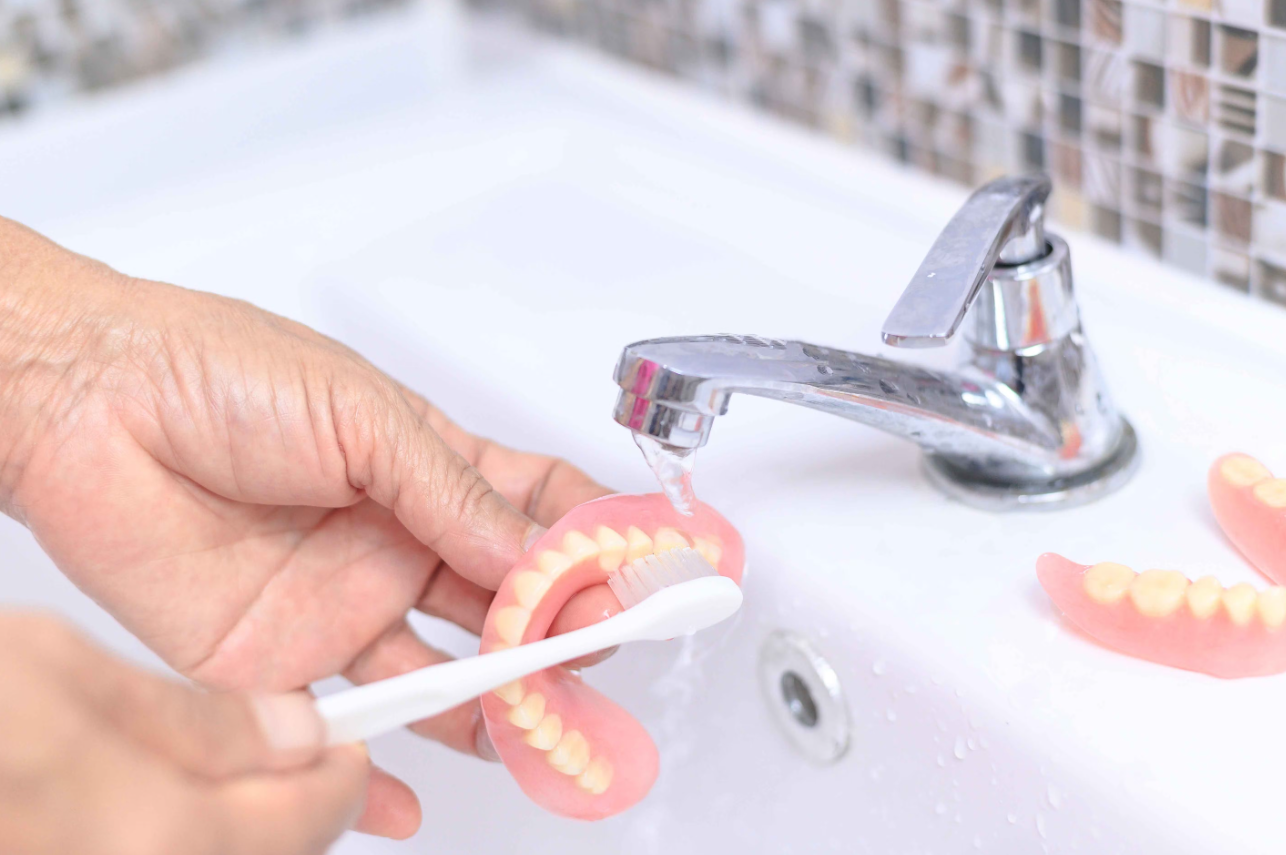Have you noticed a visible gap between your teeth and gums and wondered if there’s a way to reduce it naturally? It’s an alarming sign when the connection between your gums and teeth weakens, because it often means your gum health is deteriorating. The good news: you’re not powerless. This article explains how to fill the gap between teeth and gums naturally, with real strategies, clear steps, and information you can use right now.
We’ll walk through why these gaps occur, what you can do at home, what you can’t realistically expect, and introduce a natural solution that complements your efforts. We’ll also answer key questions people ask like: Is it possible to close a teeth gap at home? or How to regrow gum tissue naturally? Keep reading and let’s dive in.
The Gap Between Teeth And Gums: What’s Going On!
What’s happening when you see a gap between teeth and gums
When you see that there is a space between your teeth and gums, this basically implies that the gum tissue has been drawn or drawn back off the root of the teeth leaving a visible gap or pocket. This can show up as:
-
gums detaching themselves.
-
excessive sensibility (hot/cold).
-
stuck food/debris in the crevice.
-
darker coloration in the area of the gumline.
Key drivers behind this gap
The condition is caused by a number of factors:
-
Lack of healthy gums: Diseases such as Gingivitis or Periodontitis makes the gum weak in terms of attachment with the tooth.
-
Damage due to mechanical factors: Gum tissue can be irritated and eroded by brushing too hard, brushing with a hard-bristled brush, or aggressive flossing.
-
Age and wear: The gum tissue can shrink as one grows old and their teeth can move.
-
Nutritional deficiencies: Deficiency in nutrients (e.g. vitamin C, omega-3 fatty acids) may affect the ability to maintain the gums.
-
Genetics and anatomical problems: There are those with thin gums or teeth set problems that predisposes them to gaps.
Such an apparent breach is not merely a cosmetical problem. It can lead to:
-
Increased risk of root decay.
-
More sensitive and uncovered necks of teeth.
-
Areas of bacteria that collect and increase chances of getting gum disease.
-
Aesthetic issues, as well as a negative effect on confidence.
Is It Possible To Close This Gap At Home?

Addressing the question: Is it possible to close a teeth gap at home?
Short answer: Maybe, for small gaps and early-stage gum recession, but with important caveats. According to professional sources, receding gums cannot fully grow back naturally. That means complete reversal is unlikely. However, you can slow or halt progression, improve gum health, and in some mild cases reduce the appearance of the gap.
So yes, you can work toward how to fill gap between teeth and gums naturally, but managing expectations is key.
What home treatment can realistically achieve
-
Strengthen and stabilize the gum-tooth interface.
-
Reduce inflammation and infection which worsen gaps.
-
Promote healthier tissue around the teeth so the “gap” is less pronounced.
-
Prevent further gum recession.
What home treatment cannot reliably achieve
-
Full regeneration of lost gum tissue or bone.
-
Major repositioning of teeth to close wide gaps.
-
Instant results - natural methods take time, consistency, and good hygiene.
Bottom line: If you’re committed, consistent, and combine natural methods with good dental care, you can make real progress on filling the gap between teeth and gums naturally.
What Causes The Little Gap Between Gum And Teeth

Exploring: Is there a way to fix the little gap between gum and teeth?
Yes, with the right approach you can address the small gap between the gum and tooth, especially if it’s caught early. Here’s how the gap develops and how you can stop or reduce it.
Why the little gap appears
-
Initial gum inflammation leads to gum tissue detachment from the tooth root.
-
Plaque and tartar build-up at the gum line push the gums back.
-
Minor trauma (such as over-brushing) can interfere with gum stability.
-
Shifting teeth or bite changes can create new spaces between the gums and teeth.
Practical steps to “fix” it
-
Improve daily oral hygiene (soft brush, gentle flossing).
-
Remove or reduce sources of irritation (abrasive toothpaste, aggressive brushing).
-
Support gum health via diet, nutrients, and anti-inflammatory practices.
-
Use natural methods that support tissue health and reduce bacterial load.
By acting early, you’re well placed to make the gap much less visible, or perhaps feel like you’ve closed it for all practical purposes.
How To Fill Gap Between Teeth And Gums Naturally

This is the core section. Here we discuss actionable strategies you can adopt to work on how to fill gap between teeth and gums naturally. We’ll cover several sub-areas to give you a full toolkit.
Improving gum health first
Healthy gums provide the foundation. Focus on:
-
Cleaning the teeth with a soft brush twice a day. This will assist in avoiding additional recession of the gums.
-
Brushing your teeth every day, under the gum.
-
Rinse in saltwater (one teaspoon salt + one cup warm water) to decrease bacteria count.
-
The prevention of hard brushing, tobacco and sugars that cause inflammation.
Use of oil pulling & natural rinses
-
Oil pulling (swishing of a good-grade oil, say coconut or sesame oil) may decrease the bad bacteria and enhance the gum adhesion.
-
Add herbs mouth rinse (e.g. tea tree, eucalyptus) to add an added advantage.
-
Diet Nutrition and anti-inflammatory.
Nutritional support & anti-inflammatory diet
Good nutrition supports gum repair and resilience. Key focus:
-
Fatty acids such as omega-3(fishes, flax, chia) decrease inflammation of the gum, and help to maintain attachment between gum and teeth.
-
Plenty of vitamin C, vitamin D, calcium, and antioxidants (leafy greens, berries, nuts). These nutrients help healthy tissue maintenance.
-
Avoiding excessive sugar, smoking, or habits that degrade gum tissue.
Exercises and gentle mechanical support
There are gentle “exercises” to encourage teeth and gum alignment:
-
Tongue presses: Press your tongue softly against the roof of your mouth or behind your teeth for several seconds each day.
-
Smile holds: Stretch lips over teeth, hold for a few seconds, repeat.
-
Chewing gum (sugar-free) can assist balanced muscle use around teeth.
These methods support how to fill gap between teeth and gums naturally by promoting better muscular and gum support.
Monitoring progress and being consistent
-
Track your gum line in the mirror periodically.
-
Note sensitivity changes, whether food is getting trapped, whether gaps feel shallower.
-
Understand that natural improvements are gradual, often 3 - 6 months or more to notice meaningful change.
-
If you’re using home methods like dental bands or floss ties, proceed cautiously.
When simple methods aren’t enough
Some gaps are structural (due to orthodontic issues, missing teeth, or bone loss). In such cases, natural methods may help support but not fully close the gap. And full tissue regeneration may require professional intervention.
But for many people asking how to fill gap between teeth and gums naturally, these combined approaches give you realistic hope.
How To Regrow Gum Tissue Naturally?
You asked: How to regrow gum tissue naturally? Let’s look into what science says, and what realistic expectations look like.
What the science says
-
True regrowth of lost gum tissue is very limited. According to major dental clinics, once gum tissue has receded significantly, it cannot fully regenerate on its own.
-
However, you can improve the health of existing gum tissue, shrink gum pockets, reduce inflammation, and promote better attachment between gums and teeth. For example, a study found that omega-3 fatty acids improved gum-to-tooth attachment after 3 months.
-
Natural remedies such as aloe vera gels under the gums helped reduce bacterial counts and inflammation in conjunction with scaling.
What you can do
-
Use anti-inflammatory oils (omega-3, neem, clove) and essential oils to support gum healing and reduce inflammation.
-
Switch to a gentle brushing technique and a soft brush to avoid further damage to the gum margin.
-
Use saltwater rinses, herbal mouthwashes, and oil pulling daily.
-
Eat a nutrient-rich diet with vitamins C and D, calcium, and healthy fats.
-
Quit habits that harm gums (tobacco, aggressive brushing, sugary drinks).
By doing this, you’re not so much “regrowing” large amounts of gum tissue, but you are supporting healthy gum tissue, improving attachment, and preventing further recession; all of which help to fill the gap between teeth and gums naturally.
Be realistic
Understand that if your gum recession is advanced (significant bone loss, exposed roots, deep pockets) you may require professional treatment such as grafts. Natural support will help—but it won’t fully replace surgical options.
Still, every bit of healthy tissue support counts.
What Is The 2 2 2 Rule For Teeth?
The “2 2 2” rule refers to: brush for 2 minutes, 2 times a day with a soft-bristled brush, and visit your dentist every 2 years (or 2 times per year depending on your condition). While this rule is basic, it ensures you’re maintaining good oral hygiene, essential for preventing and treating gaps.By following it, you support how to fill gap between teeth and gums naturally.
Why Am I Getting A Gap In My Front Teeth?

Gaps in the front teeth often result from:
-
Tooth size vs jaw size mismatch (teeth smaller than space).
-
Habitual thumb-sucking as a child, or tongue thrusting.
-
Gum recession and bone loss altering tooth alignment.
-
Teeth shifting over time due to wear or missing teeth
So, a visible gap may not just be about the gums, it could also be about the teeth themselves. That’s why while we focus on gums, you also need to consider alignment and tooth structure.
What Deficiency Causes Teeth Gaps?
While not solely “teeth gap” reasons, deficiencies can contribute:
-
Vitamin C deficiency weakens gum and connective tissue support.
-
Omega-3 fatty acid deficiency promotes inflammation and weaker gum-to-tooth attachment.
-
Calcium and vitamin D deficiencies impair bone health beneath the gum line.
Addressing nutritional deficiencies helps your efforts in how to fill gap between teeth and gums naturally.
Why Are My Teeth Separating As I Get Older?

As we age:
-
Gum tissue may recede and bone may remodel, creating tiny spaces under the gum line.
-
Teeth may shift because of wear, loss of adjacent teeth, or changes in bite forces.
-
Accumulated minor gum disease over time can erode support structures.
So yes, age plays a role, and the result can be new gaps appearing. The good news: you can still act, and doing so improves your odds of filling those gaps naturally.
How Long Does It Take To Close A Teeth Gap?
This depends heavily on:
-
The size of the gap.
-
The underlying cause (gum issue vs tooth misalignment).
-
How consistent you are with the natural methods.
-
Whether you combine home methods with dental check-ups.
If the gap is small and mainly due to mild gum issues, you might see improvement in 3-6 months of consistent effort. But for bigger gaps, structural problems, or advanced gum recession, natural methods alone may not “close” the gap, though they can improve the appearance and stability. Always monitor progress, and consult a dental professional if you hit a plateau.
Incorporating The Natural Product Boost

Here’s where a supportive product can really help you in your quest for how to fill gap between teeth and gums naturally.
Introducing our product
If you currently suffer from poor oral health (bleeding gums, tooth pain, sensitivity to hot or cold), consider using The Goodbye Company Gum Disease Oral Solution. It’s an all-natural preventative oral care solution, formulated to help prevent and treat gingivitis, and support healthier gums and teeth.
Why this product complements your natural efforts
-
It’s infused with Omega 3 and Omega 9 oils plus neem and clove essential oils—all known for their anti-inflammatory, antibacterial and tissue-supporting properties.
-
These oils fit perfectly into the home regime of good brushing, flossing and natural remedies. They raise your baseline of gum health so you’re better positioned to fill the gap.
-
When you combine brushing with a soft brush, flossing, saltwater rinses, and this natural solution, you create a holistic mouth-care environment—great for efforts around how to fill gap between teeth and gums naturally.
How to use it in your daily routine
-
After brushing (twice a day) and flossing, apply the solution as directed (often a few drops or a rinse).
-
Use it consistently - daily. Natural solutions require persistence.
-
Pair with your natural methods: oil pulling, tongue exercises, supportive diet.
-
Monitor your gum line monthly. Look for reduced sensitivity, less plaque, firmer gum-to‐tooth connection.
Remember: while this product is powerful, it supports your efforts; it doesn’t replace good hygiene, a healthy diet, or seeing your dentist when needed.
Tips, Warnings And Best Practices
Tips to maximise your results
-
Use a soft-bristled toothbrush, avoid hard bristles and aggressive brushing, gentle is better.
-
Floss gently: avoid snapping the floss into the gums which can cause trauma.
-
Stick to your natural routine (oil pulling, salt rinse, diet) consistently.
-
Monitor your progress: take photos of your gum line every few months so you can visually track any changes.
-
Stay patient: natural methods take time. Don’t expect overnight miracle changes.
-
Replace your toothbrush every 3-4 months or sooner if bristles splay.
Warnings and when to seek professional help
-
If you have deep gum pockets, visible bone loss, loose teeth, persistent bleeding or pain—seek a dentist or periodontist. Natural methods alone may not suffice.
-
Avoid DIY methods that pull teeth together (e.g., rubber bands) without supervision. These can cause tooth damage or root resorption.
-
If you use essential oils make sure you’re not allergic to them, and use them in safe concentrations.
-
Note: even the best natural methods cannot fully regenerate severely damaged gum tissue. As mentioned earlier, regrowth is limited.
-
Keep your dentist informed of your natural routine so that professional cleanings, check-ups, and underlying structural issues can be addressed.
Checklist For Your “Gap-Filling” Plan
|
Brush twice daily with soft-bristled brush |
✔ |
|
Floss once daily properly |
✔ |
|
Saltwater rinse (1 tsp salt + 1 cup warm water) 1-2 times/day |
✔ |
|
Oil pulling (coconut or sesame oil) for 10-20 mins each morning |
✔ |
|
Nutrient-rich diet: plenty of omega-3, vitamin C, D, calcium |
✔ |
|
Gentle tongue/cheek/face exercises (tongue presses, smile holds) |
✔ |
|
Use The Goodbye Company Gum Disease Oral Solution daily |
✔ |
|
Avoid smoking, hard brushing, sugary snacks |
✔ |
|
Visit your dentist every 6-12 months (or sooner if issues) |
✔ |
|
Monitor gum-to-tooth gap monthly (photo + notes) |
✔ |
Here’s a handy checklist you can print or copy to your phone—helps when you’re working on how to fill gap between teeth and gums naturally.
Save this. Follow it. Revisit your progress after 3 months and 6 months.
Outlook
Learning how to fill gap between teeth and gums naturally is a smart move, because you’re tackling the root of the problem (gum health) rather than only disguising the symptom. While you may not always completely “fill” every gap, you will improve your gum-to-tooth connection, stabilize your gums, reduce sensitivity and reduce the risk of worsening issues.
Remember: success comes from consistency, a combination of supportive natural habits, good hygiene and sometimes professional oversight. And adding a product like The Goodbye Company Gum Disease Oral Solution gives you that extra leverage, those anti-inflammatory oils (Omega 3 & 9, neem & clove) help you stay ahead in the game.
If you ever feel like you’re not improving (after 3-6 months) or if the gap is large or your gums are painful/bleeding, please don’t wait. See your dentist. Let them check for structural issues. But meanwhile, you’re actively doing something about it, something natural, effective, and preventive.
Stay consistent. Be gentle. Monitor regularly. You’re on the right path to improving your gum health and reducing that gap.









